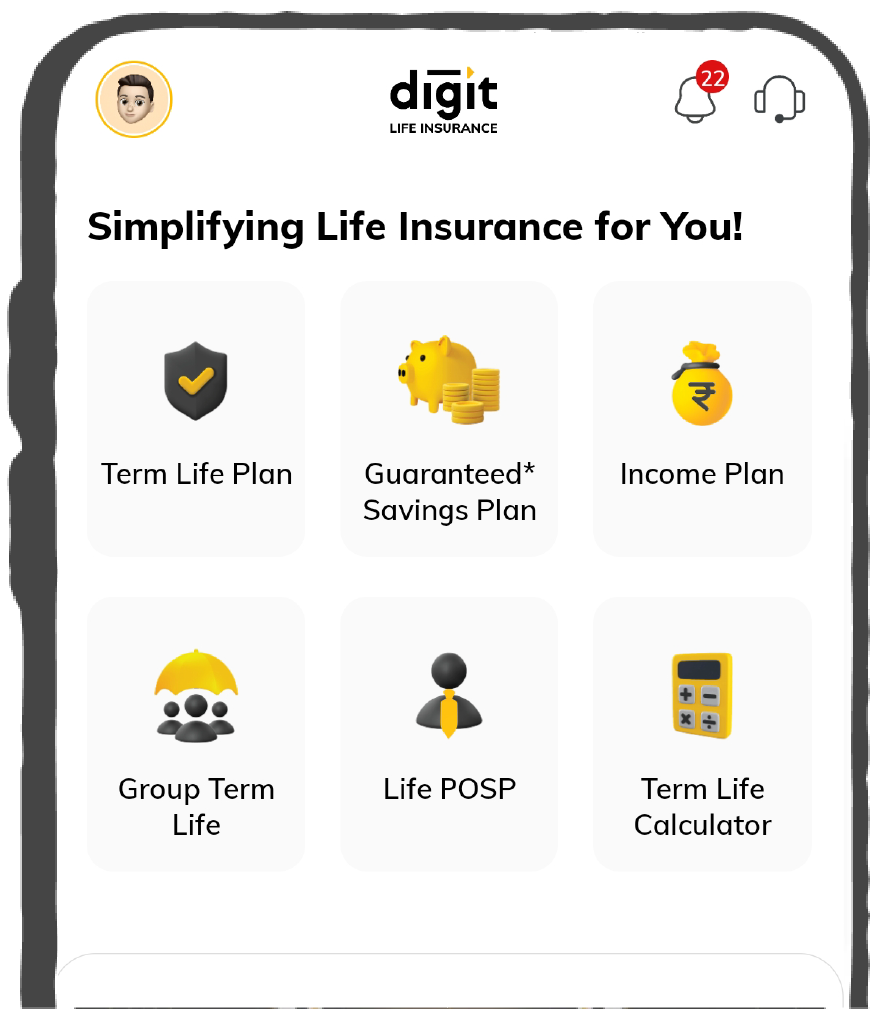How to Reduce Term Life Insurance Premiums?

Term life insurance is the most inexpensive form of life insurance available. It offers immense coverage and acts as a safety net for your family. Given its affordability and importance, reducing your term life insurance premiums can further enhance its value, making it accessible to more individuals.
This article will examine several strategies on how to reduce life insurance premiums without having to sacrifice coverage.

Table of Contents

9 Ways to Reduce Life Insurance Premiums in India
1. Maintain a Healthy Lifestyle
Leading a healthy life is one of the most effective ways to reduce your term life insurance premium. An insurer may gauge how much of a risk you are by assessing your general health condition. Regular exercise, a balanced diet, and avoiding unhealthy habits can help you build a chance for minimal premiums.
Improvements in cholesterol levels, blood pressure, and weight are sure indications to an insurer that you are low-risk; thus, your premium will be significantly reduced.
2. Refrain from Smoking and Drinking Habits
Smoking and excessive drinking are among the highest-risk behaviours for life insurers. For smokers, the premiums may be as high as 2-3 times a non-smoker's. The same is applied to heavy drinking.
Quitting these bad habits of smoking and only occasionally drinking may make a huge difference in lowering term life insurance premiums because these two are considered to be among the highest factors in health issues and early death among those cases.
3. Choose Your Riders Smartly
Riders are additional benefits that can be added to your term life insurance policy, such as accidental death benefit riders, critical illness riders, or waiver of premium riders. While these can offer valuable protection, they come at an extra cost.
Be selective when choosing riders, and only opt for the ones necessary for your financial goals. Overloading your policy with fewer riders will increase your premium, so it's essential to choose wisely.
4. Start at a Young Age
When you are young, you can buy term life insurance, resulting in less expensive premiums. That's mainly because youths are generally healthier and less of a risk for an insurer to underwrite.
As time passes, the possibility of health issues increases, leaving you facing higher premiums. If you initiate a policy in your 20s or 30s, it will cost a lower rate locked in for your policy term.
5. Buy a Policy Online
Online insurance providers typically offer relatively lower quotes than traditional insurance brokers. You only pay for the middlemen whom you would have otherwise passed through if you were to buy conventionally, and then the insurer saves and can return this saving to you.
Most insurance companies offer some form of incentive for buying via their websites. You can also compare different plans at your convenience when buying online using the term insurance calculator.
6. Compare Policies Before Buying One
It’s crucial to shop around and compare different policies from various insurers before making a final decision. Each insurer has its pricing model, and premiums can vary significantly for the same coverage amount.
For instance, consider looking into a ₹1 crore term insurance plan to see how it compares to other policies in terms of value and benefits.
Use online comparison tools to explore options, analyse the policy benefits, and select a plan that meets your needs while offering the best premium rate. Comparing policies ensures that you don’t overpay for your coverage.
7. Opt for a Longer Policy Term
A longer-term policy can ensure lower premiums over a longer time. Although short-term policies seem cheaper in the short run, they might appear more expensive when renewed much later in life because premiums increase.
A 20 or 30-year term will secure you a low premium for a longer period without the need to anticipate rate increases with age.
8. Pay Premiums Annually
Many insurance companies also offer a discount if you pay annually rather than monthly or quarterly. The administrative costs are at a minimum when you pay yearly, and that amount is given to you.
You might have a big cash flow upfront, but the amount saved in the long term compensates for it; thus, paying yearly can be a good strategy to bring down the overall premium.
9. Choose a Simplified Underwriting Policy
Simplification of the underwriting policy often requires fewer medical exams and health-related requirements. Although it may seem more straightforward to choose this option, simplified policies tend to attract much higher premiums.
Taking up traditional underwriting, where the health is soundly analysed, you may even come out with lower premiums if your health is good. Thus, the benefits of simplifying underwriting are balanced against possible cost savings in a fully underwritten policy. This will also help you when obtaining a health insurance policy.
Factors Impacting Life Insurance Premiums
1. Age
The younger applicants will pay less because they pose a lower risk to the insurers.2. Health
A higher rate is caused by a pre-existing condition, such as heart disease, high cholesterol, or diabetes.3. Lifestyle
Risky habits, including smoking or excessive drinking, increase premium rates.4. Occupation
Policies for more dangerous occupations (e.g., construction, firefighting) are usually more expensive.5. Coverage Amount
Higher coverage amounts lead to higher premium rates.6. Policy Term
The length of the policy term affects the premium, with longer terms often being more cost-effective over time.FAQs about How to Reduce Term Life Insurance Premium
What factors affect term life insurance premiums?
How does purchasing term life insurance at a younger age help reduce premiums?
Can maintaining a healthy lifestyle lower my term life insurance premium?
How do I calculate the right coverage amount to avoid overpaying for term life insurance?
Does choosing a longer policy term reduce term life insurance premiums?
Can I reduce my life insurance premiums?
Why is my life insurance premium different from that of my peer, who is the same age?
How does comparing term insurance policies help you make the right choice?
I have just started my career. Is it the right time to buy a term insurance policy?
Is buying a term insurance plan beneficial during the COVID-19 pandemic?
How can I get an estimate of the term insurance premium?
Other Important Term Insurance Guides
Other Important Articles Related to Term Insurance










